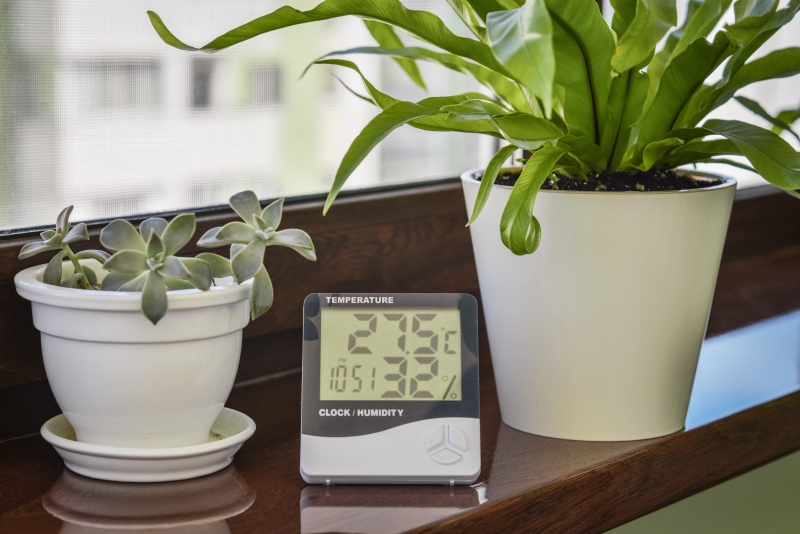Excessive humidity is a common issue for homeowners, especially during summer months. Too much humidity not only makes you feel uncomfortable right now – it can also affect your home and your health over time. That’s why you’ll want to make sure your indoor humidity levels are within the recommended range.
Ideal indoor humidity levels
Whether you live in a house or a condo, you’ll want to keep the indoor humidity level between 30 and 45 per cent. This can be a challenge to achieve during summer months when warmer air naturally retains more moisture, but it’s not an impossible task. In fact, there are a lot of different things you can do to effectively manage humidity levels.
Proper maintenance is the key. It’s particularly important if you own a newly built home, as your builder-provided warranty will not cover moisture-related issues – like damage to hardwood floors or mould growth – that arise from improper homeowner maintenance.
Tips for managing indoor humidity
When it comes to tackling excessive indoor humidity, there’s not going to be a single solution that will solve the problem. Instead, it’s going to take a combination of best practices. Here are some of the things you can do:
- Invest in a hygrometer. Your first step in controlling humidity is to know exactly what you’re dealing with. Hygrometers are simple tools that allow you to measure humidity levels. They’re inexpensive, and you can find them at most hardware stores.
- Limit the number of plants inside your home. Plants release moisture into the air, which contributes to overall indoor humidity.
- Use your home’s ventilation system. Turn exhaust fans on when cooking, showering, or doing laundry. It’s also a good idea to leave them running for a short time after you are done to ensure that excess moisture is removed from the air.
- Keep areas throughout your home as tidy as possible. Storage spaces and general clutter can interfere with air circulation, trap humidity and lead to mould growth.
- Get a dehumidifier. A dehumidifier will help to remove excess moisture from the air. Dehumidifiers are available as standalone units or can be integrated into your home’s HVAC (heating, ventilation, and air conditioning) system. Some builders sell them as an add-on feature, so it’s worth checking to see if you already have a dehumidifier before going out and buying one.
- Plan your landscaping in a way that does not alter the grading around your foundation. For example, adding flowerbeds close to your foundation can cause rainwater to pool close to the structure instead of being diverted away from it. This water can then enter your home through foundation cracks and contribute to moisture levels inside.
Finally, let the outside air in sometimes. Opening some windows on drier days, especially in the basement, will help air out musty interior spaces.
Following some or all of the above tips will help safeguard your health and your home against the negative effects of too much humidity.
Check out our Homeowner Resources and Learning Hub for more summer home maintenance tips.
